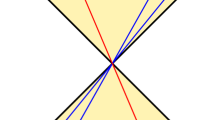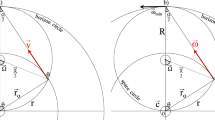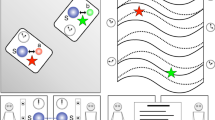Abstract
MAY I suggest an alternative approach to this problem making use of the Fitzgerald–Lorentz contraction? Consider as before a pair of twins, one of whom (Traveller) makes the pilgrimage to Alpha Centauri, four light years away, and the other (Stayathome) does not. Before starting they set up identical crystal-controlled short-wave transmitters by means of which they can follow each other's progress and, with suitable frequency-dividers, operate their clocks.
This is a preview of subscription content, access via your institution
Access options
Subscribe to this journal
Receive 51 print issues and online access
$199.00 per year
only $3.90 per issue
Buy this article
- Purchase on Springer Link
- Instant access to full article PDF
Prices may be subject to local taxes which are calculated during checkout
Similar content being viewed by others
Author information
Authors and Affiliations
Rights and permissions
About this article
Cite this article
FREMLIN, J. Relativity and Space Travel. Nature 180, 499–500 (1957). https://doi.org/10.1038/180499a0
Issue Date:
DOI: https://doi.org/10.1038/180499a0
This article is cited by
-
In Defence of Dingle's Opponents
Nature (1973)
-
The clock paradox in the relativity theory
International Journal of Theoretical Physics (1972)
-
Relativistic observations and the clock problem
Il Nuovo Cimento (1960)
-
The Clock Paradox in Relativity
Nature (1957)
Comments
By submitting a comment you agree to abide by our Terms and Community Guidelines. If you find something abusive or that does not comply with our terms or guidelines please flag it as inappropriate.



